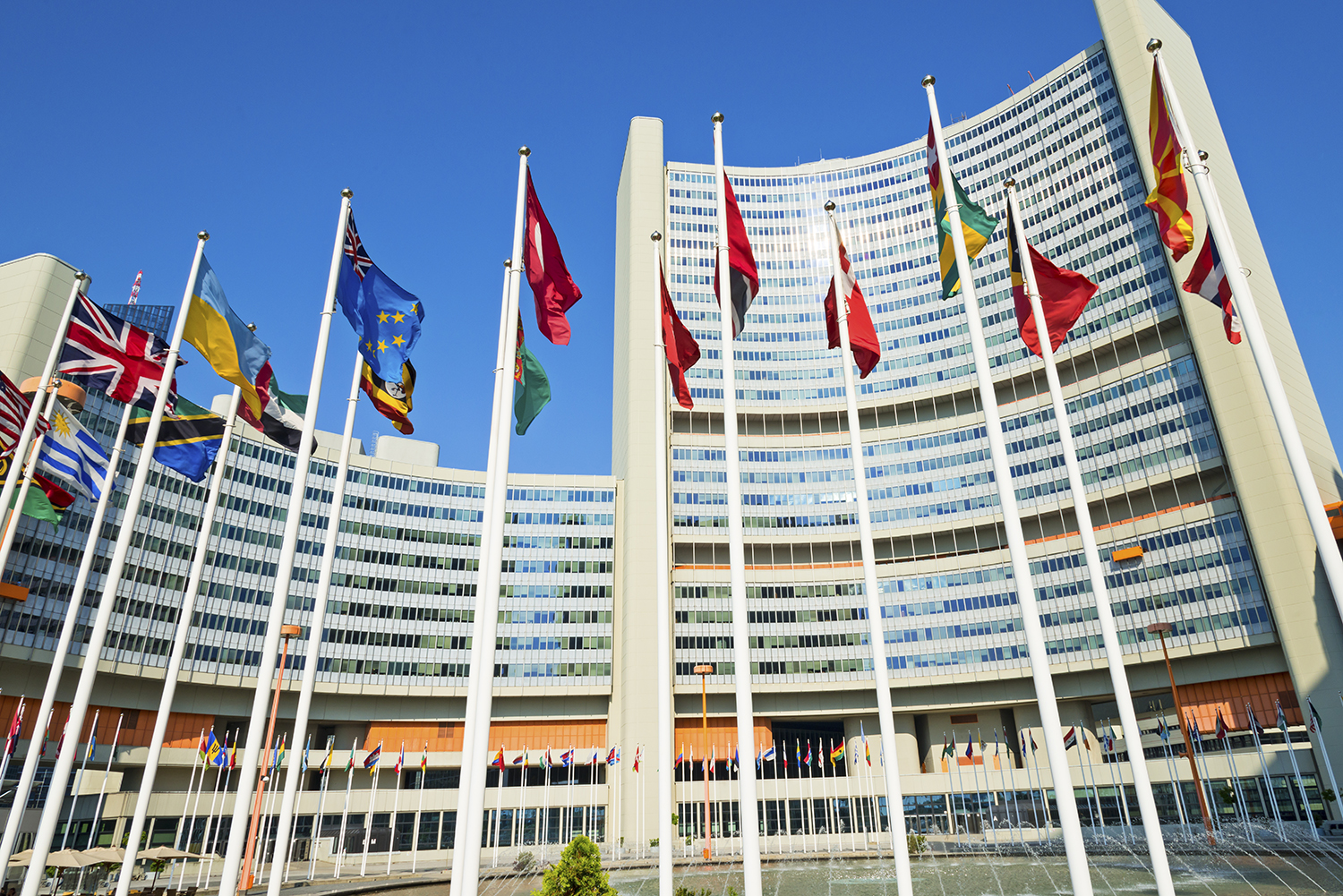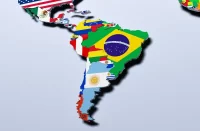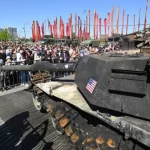In October 2018, Senior Adjunct Fellow of the Federation of American Scientists and former safeguards inspector with the International Atomic Energy Agency (IAEA), Thomas Shea, unveiled his book Verifying Nuclear Disarmament at the Vienna Center for Disarmament and Non-Proliferation.
A key element of his publication is the establishment of a new international control mechanism for the phased and complete elimination of nuclear weapons by all nuclear powers, which will simultaneously monitor any attempts to re-create such weapons of mass destruction again.
In his book, the 78-year-old author, who began his military career on a US aircraft carrier fitting carrier-based aircraft with nuclear bombs, builds on the provisions of the international Treaty on the Prohibition of Nuclear Weapons (TPNW) adopted in July 2017 by suggesting that a special implementing body be set up, which he calls the International Nuclear Disarmament Agency (INDA), to complement the IAEA should the treaty ever enter into force.
According to the US expert, the INDA would be a key body for controlling the entire process of global nuclear disarmament, it would oversee the dismantling of nuclear warheads and the equipment needed to make them at nuclear weapons facilities, and it would also ensure that nuclear weapons are never made again. The agency would operate in accordance with the principles set out in the text of the TPNW.

Thomas Shea has worked out the organisational structure of the INDA and sets this out in his book, along with the principles of its interaction with nuclear states and the IAEA.
The American researcher believes that the INDA should be headed by a Nuclear Disarmament Council made up of 24 members (one from each country party to the TPNW). The council would have nine permanent committees that would control the process of eliminating nuclear weapons, safeguard weapon-sensitive information, ensure the safety and security of nuclear weapons, and carry out inspections to verify nuclear disarmament agreements, so perform certain supranational functions, in other words. The council would also oversee the day-to-day activities of the new disarmament control agency and help implement all the provisions of the Treaty on the Prohibition of Nuclear Weapons. The INDA’s research work will be provided by its staffed Research Institute and its Center for Research and Development related to the verification of nuclear disarmament.
The book’s author has developed key principles for preventing rearmament following the total elimination of nuclear weapons from the world’s arsenals, including the introduction of a strict inspection regime and the international control of fissile material that could be used to make nuclear warheads. He also suggests converting highly enriched uranium to low-enriched uranium as soon as possible, which could then only be used in nuclear power plants.
The American researcher proposes starting the nuclear disarmament process by determining for each nuclear state the minimum amount of fissile material that could be used to made nuclear warheads. He believes it would then be possible to embark on a reciprocal exchange of information about operationally deployed nuclear warheads, which should be eliminated first, and then information about non-deployed warheads, which should be disposed of second. The next step in the nuclear disarmament process would be an agreement to reduce the amount of fissile material intended for nuclear weapons and place all remaining stocks of fissile material under special international control to rule out future rearmament.
Thomas Shea suggests that nuclear states take ten confidence-building nuclear disarmament measures. In particular, he believes that an important measure to increase the level of trust between nuclear states in the nuclear missile sphere would be their mutual commitment not to be the first to use nuclear weapons against each other or not to use them at all, whether first, second, or third, and he also calls for the signing of bilateral agreements on the gradual reduction of nuclear arsenals.
Referring to the Nuclear Posture Review approved by the Trump administration in February 2018, Thomas Shea criticises Russia, China and North Korea for modernising their nuclear weapons, while ignoring the fact that the nuclear arsenals of the West’s “nuclear troika” (Great Britain, the US and France) have been upgraded, as have those of the de facto nuclear powers – Israel, India and Pakistan.
Thomas Shea expresses support for the eventual entry into force of the international TPNW. This contradicts Washington’s official negative position on general nuclear disarmament, which is the most strongly opposed to the idea being implemented in comparison with the other nuclear-armed states. It is well known that the US has already started making plans to create a completely new strategic nuclear triad over the next seven to eight years, which America’s current military and political leaders envisage will exist right up to the 2080s.
The US researcher does not mention any deadlines in his book for reaching global nuclear zero, recognising that the process for complete nuclear disarmament could take many years due to existing disagreements on the issue between nuclear-armed states. He simply notes more generally that nuclear disarmament can only take place when every legal nuclear power – which is to say the “nuclear five” represented by the five permanent members of the UN Security Council – and the four de facto nuclear powers that are not party to the Non-Proliferation Treaty – namely Israel, North Korea, India and Pakistan – understand that they will not be able to fully safeguard their security with nuclear weapons alone and so will switch to non-nuclear means to protect their defence interests. Thomas Shea believes that “disarmament won’t come quickly, quietly or cheaply”.

It is likely that the book will arouse some interest among those in the field as an example of the author’s development of a global mechanism for verifying complete nuclear disarmament at some point in the future. It is unlikely to become a catalyst for discussions on how to create a world completely free of nuclear weapons, however, given that the level of nuclear missile confrontation in the world has grown significantly thanks to the biggest nuclear power – America – while the threshold for using nuclear weapons has been lowered, particularly given the Pentagon’s readiness to use low-yield nuclear warheads, which is to say nuclear warheads with an explosive power of less than 5 kilotons.
The real situation in the world today shows that there are too many doctrinal and military-technical obstacles preventing the complete and irreversible elimination of all nuclear weapons. Their elimination is also made more complicated by the lack of a global consensus. There has also been no noticeable increase in the level of trust between nuclear-armed states, which all have different views on nuclear arms control and the doctrinal basis for their actual use.
It is important to bear in mind that only two-thirds of UN member states voted in favour of adopting the TPNW and it did not have the support of every nuclear power. The process of joining it is even worse: only a third of UN member states have actually signed it. The ratification process is moving along just as slowly. As of November 2018, it had been ratified by less than half of the 50 countries required.
The difficulties in implementing the TPNW are also reflected in the fact that a large proportion of the global community does not want to retain the Intermediate-Range Nuclear Forces Treaty in its current form. This is clearly shown by the results of a UN vote. In October 2018, the First Committee of the United Nations General Assembly, which debates disarmament and international security, unfortunately voted against a draft resolution in support of the INF Treaty. Thirty-one countries voted in favour, 54 countries abstained, and 55 countries, including the US, Great Britain, Canada, France and Ukraine, voted against.
In other words, there is a lack of a global consensus on nuclear disarmament. In fact, it is possible that America’s targeted efforts to unilaterally withdraw from the INF Treaty and its refusal to extend START III could undermine the nuclear non-proliferation regime that has existed for many decades, as well as the entire international legal system for nuclear and conventional arms control that has been established with such difficulty over a long period of time.














The globe has been in a Neuclear War since WWII.
All the testing that has gone on.
Depletted Uraniun Weapons as aroumour re-enforcing, ammunition.
Mini nukes used on battlefields with and since Geo W Bush.
Leaking that has been allowed at nuke plants.
Fukishima and others.
Background radiation is extremely High.
The Wigner Effect has been in effect.
This also sickens people and destory the DNA Matrix, helping to bring in Transhumanism.
The powers that be, will not use big nukes, which by the way have to be exploded on a platform or on the ground; not dropping bombs or missles. These would destoy property owned by the controllers.
So another phoney UN Org or Swiss NGO is just part of the brainwashing of the sheep.